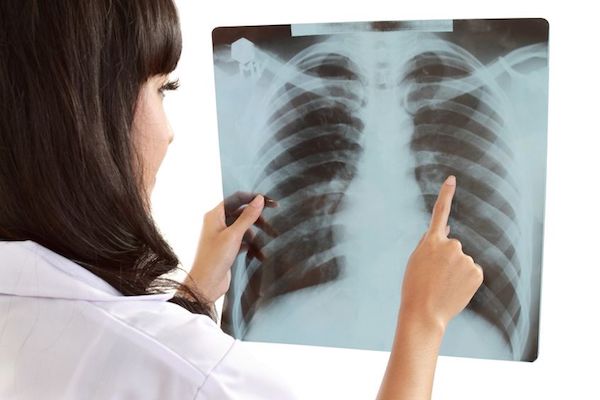Chronic obstructive pulmonary disease (COPD) is a chronic inflammatory lung disease that causes airflow from the lungs to be obstructed.

COPD causes include long-term exposure to air pollutants, most notably cigarette smoke. While cigarette smoke plays a role in the lung damage that leads to development of COPD, there are other factors too, including a genetic susceptibility as well as other irritants such as second-hand smoke, air pollution, and occupational exposure to industrial dust and fumes.
Chronic bronchitis and emphysema also contribute to COPD. In emphysema, the air sacs at the end of the bronchioles of the lungs are destroyed due to damaging exposure. Chronic bronchitis is inflammation of the lining of the bronchial tubes that carry air to and from the air sacs of the lungs.
COPD increases the risk of developing further health complications, such as heart disease and lung cancer.
What are its symptoms?
COPD symptoms include the following:
- Wheezing
- Chest tightness
- Shortness of breath, particularly during physical exertion or exercise
- Necessity to clear the throat on waking in the morning due to excess mucous
- Chronic cough that produces clear, white, or greyish sputum. If yellow or greenish sputum is present, it indicates a bacterial infection.
- Frequent respiratory infections
- Lack of energy/fatigue
COPD also produces episodes known as an exacerbation – during this time symptoms become worse and persist for several days.
How is it diagnosed?
If you recognise the symptoms and have been exposed to lung irritants, especially cigarette smoke, over a long period of time, it’s advisable to seek medical advice. COPD is a progressive disease that can lead to further health complications, and treatment for advanced COPD may be less effective.
Your doctor may perform a number of tests to establish the presence of COPD. These include:
- A lung function test: You blow into a large tube called a spirometer that measures how much air your lungs can hold and how fast you can blow the air out.
- Chest X-ray: This can diagnose emphysema.
- CT scan: This can detect emphysema, and can also be used to screen for lung cancer.
- Arterial blood gas analysis: This is a blood test that measures how effectively your lungs are bringing in oxygen and removing carbon dioxide. Oxygen treatment may be recommended as a result.
- An electrocardiogram (ECG): This will detect associated heart problems.
What are your treatment options?
Once diagnosed, there are a number of COPD treatments that are quite effective, especially if the COPD is mild:
- Stop smoking – this may not be an easy task, so speak to your doctor about therapies available to assist you.
- Avoid second-hand smoke wherever possible.
- Medication may include using a bronchodilator, usually in the form of an inhaler, which relaxes the muscles around the airways, and relieves cough, shortness of breath, and aids breathing. Short and long-acting bronchodilators or both may be prescribed.
- Inhaled corticosteroids reduce inflammation in the airways and prevent exacerbations.
- Lung therapies include oxygen therapy, or a pulmonary rehabilitation programme that addresses lifestyle issues such as exercise and nutrition.
Can it be prevented?
COPD has specific causes so prevention is possible. To reduce your risk of getting COPD, the following is advised:
- Don’t smoke, or stop smoking
- If you’re exposed to occupational lung irritants, speak to your employer about protective equipment.
For more info
For assistance with stopping smoking, visit the following websites for advice:
Cancer Association of South Africa: www.cansa.org.za/how-to-quit-smoking-and-why
Allen Carr’s Easyway: www.allencarr.co.za
Smokenders: www.smokenders.co.za
IMAGE CREDIT: 123rf.com
